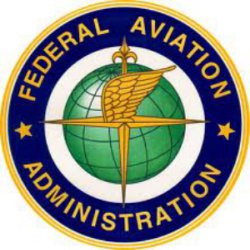The Federal Aviation Administration has announced its policy for the type certification of certain unmanned aircraft systems as a special class of aircraft. This policy is effective September 18, 2020.
In 2012, Congress passed the FAA Modernization and Reform Act of 2012 (Pub. L. 112-95). Section 332 of Public Law 112-95 (codified at 49 U.S.C. 44802) directed the FAA to develop a comprehensive plan to safely accelerate the integration of unmanned aircraft systems (UAS) into the National Airspace System (NAS). As part of that plan, the FAA issued the Operation and Certification of Small Unmanned Aircraft Systems final rule (81 FR 42064, June 28, 2016), which added 14 CFR part 107 to the FAA’s regulations in Title 14 of the Code of Federal Regulations (14 CFR).
Part 107 sets forth rules for the operation of small UAS [1] that do not require FAA airworthiness certification. Under part 107, operations may not occur over persons,[2] at night, generally above an altitude of 400 feet above ground level, or beyond visual line-of-sight, without a waiver issued by the FAA. UAS weighing 55 pounds or more and small UAS operating outside the limitations imposed by part 107 must receive airworthiness certification, a waiver, or an exemption as appropriate.
The FAA establishes airworthiness criteria and issues type certificates to ensure the safe operation of aircraft in accordance with 49 U.S.C. 44701(a) and 44704. Section 44704 requires the Administrator to find an aircraft, aircraft engine, propeller, or appliance is properly designed and manufactured, performs properly, and meets the regulations and minimum standards prescribed under section 44701(a) before issuing a type certificate for it.
14 CFR part 21 contains the FAA’s procedural requirements for airworthiness and type certification. When the FAA promulgated part 21 as part of its re-codification to combine and streamline the Civil Air Regulations, it originally required applicants for a type certificate to show that the product met existing airworthiness standards (29 FR 14562, October 24, 1964). Existing airworthiness standards for aircraft and other products, issued as a separate part of the FAA’s regulations, are: Normal category airplanes under 14 CFR part 23, transport category airplanes under 14 CFR part 25, normal category rotorcraft under 14 CFR part 27, transport category rotorcraft under 14 CFR part 29, manned free balloons under 14 CFR part 31, aircraft engines under 14 CFR part 33, and propellers under 14 CFR part 35.
The FAA subsequently amended part 21 to add procedural requirements for the issuance of type certificates for special classes of aircraft (52 FR 8040, March 13, 1987). In the final rule (amendment 21-60), the FAA explained that it intended the special class category to include, in part, those aircraft that would be eligible for a standard airworthiness certificate but for which certification standards do not exist due to their unique, novel, or unusual design features. The FAA further stated that the “decision to type certificate an aircraft in either the special class aircraft category or under . . . the FAR is entirely dependent upon the aircraft’s unique, novel, and/or unusual design features.” (52 FR 8041).
Specifically, the final rule (amendment 21-60) revised § 21.17(b) to include the certification procedure for special classes of aircraft. For special classes of aircraft, for which airworthiness standards have not been issued, the applicable airworthiness requirements will be the portions of those existing standards contained in parts 23, 25, 27, 29, 31, 33, and 35 found by the FAA to be appropriate for the aircraft and applicable to a specific type design, or such airworthiness criteria as the FAA may find provide an equivalent level of safety to those parts.
An “unmanned aircraft” is an aircraft operated without the possibility of direct human intervention from within or on the aircraft. See 49 U.S.C. 44801(11); 14 CFR 1.1. Unmanned aircraft include all classes of airplanes, rotorcraft, and powered-lift aircraft. Many UAS elements, while essential for safe operation, are part of the UAS system but are not permanent features of the unmanned aircraft. For example, instead of traditional landing gear with wheels and brakes, many UAS have a launch and recovery system. Additionally, because the pilot is not situated within the aircraft, unique configurations and applications of airframes, powerplants, fuels, and materials are possible and can result in flight characteristics different from those of conventional aircraft. These features specific to UAS are the very unique, novel, and/or unusual features the special class category was designed to accommodate.
A notice of policy and request for comments regarding the type certification of certain UAS was published in the Federal Register on February 3, 2020 (85 FR 5905). The public comment period for the notice closed on March 4, 2020. The notice proposed that some UAS with no occupants onboard may be type certificated as a special class of aircraft under § 21.17(b). The notice also proposed that for airplane and rotorcraft Start Printed Page 58252designs, when appropriate, the FAA may still issue type certificates under § 21.17(a).
The full notice with comments can be viewed here.
Source: Federal Register

